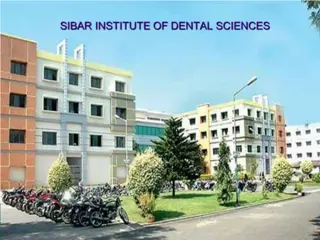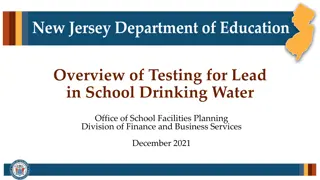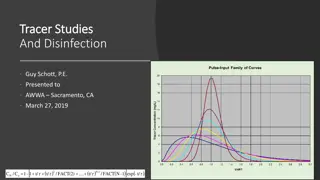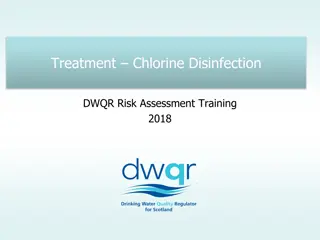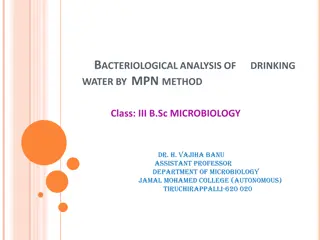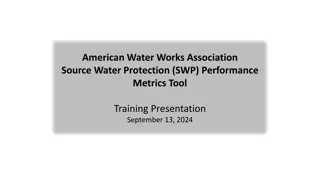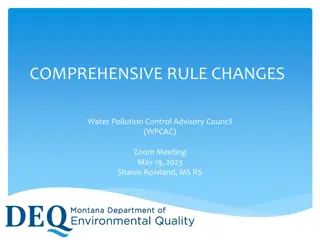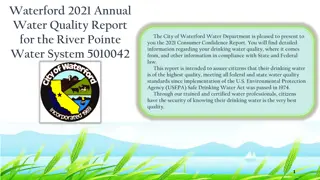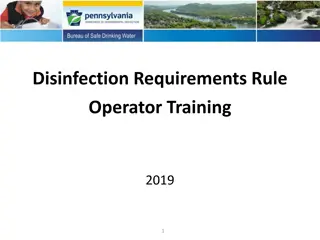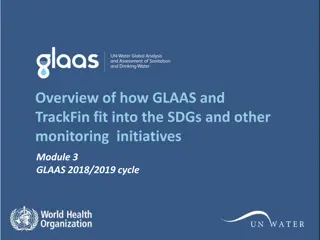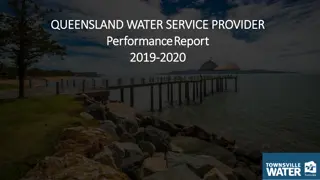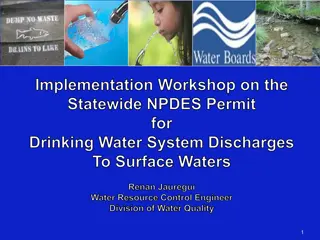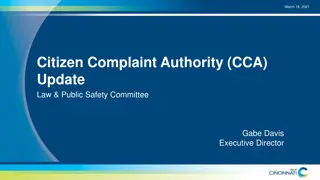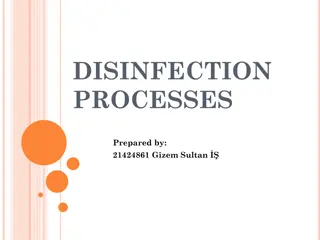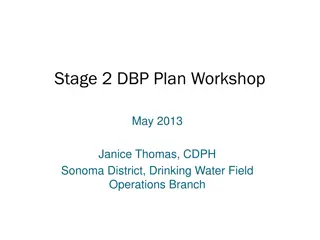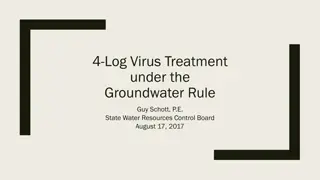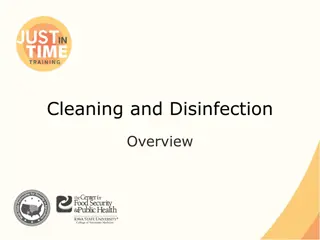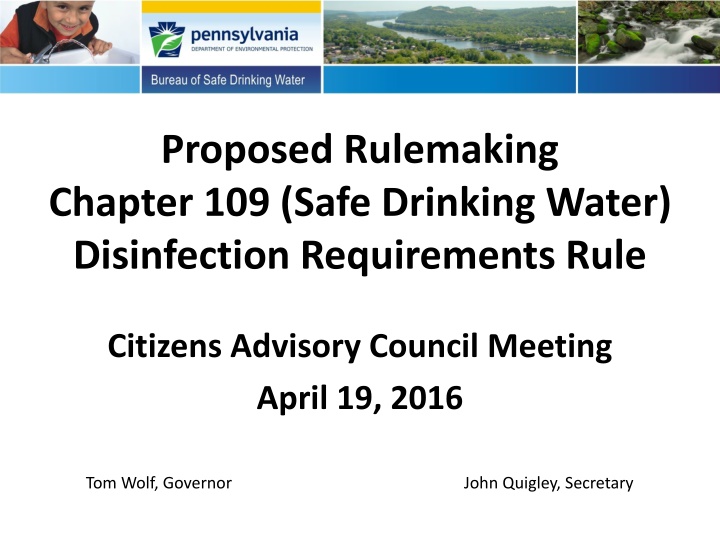
Safe Drinking Water Disinfection Requirements Rule Citizen Advisory Council Meeting
Proposed rulemaking chapter 109 regarding safe drinking water disinfection requirements discussed at the Citizen Advisory Council meeting. The history of rulemaking, purpose, and challenges in maintaining water quality are highlighted, emphasizing the need for amendments to protect public health.
Download Presentation

Please find below an Image/Link to download the presentation.
The content on the website is provided AS IS for your information and personal use only. It may not be sold, licensed, or shared on other websites without obtaining consent from the author. If you encounter any issues during the download, it is possible that the publisher has removed the file from their server.
You are allowed to download the files provided on this website for personal or commercial use, subject to the condition that they are used lawfully. All files are the property of their respective owners.
The content on the website is provided AS IS for your information and personal use only. It may not be sold, licensed, or shared on other websites without obtaining consent from the author.
E N D
Presentation Transcript
Proposed Rulemaking Chapter 109 (Safe Drinking Water) Disinfection Requirements Rule Citizens Advisory Council Meeting April 19, 2016 Tom Wolf, Governor John Quigley, Secretary
History of Rulemaking Received DEP regional staff input in Jan. 2014. This proposed rulemaking was originally included in the Pre-Draft Proposed Revised Total Coliform Rule (RTCR) -- presented to TAC on 6/18/2014 and 9/23/2014. On 4/21/2015, the EQB approved the proposed RTCR with modifications which included splitting out the non-RTCR provisions for additional stakeholder input. 2
History of Rulemaking TAC meetings were convened on 5/18, 5/26, 6/16 and 6/30/2015 to gather additional stakeholder input 14 water systems and organizations delivered presentations. Two additional meetings were held with large water systems on 6/29/2015 and 7/16/2015. TAC provided a final set of recommendations on 7/15/2015. 3
Background and Purpose Why is the Department amending the disinfectant residual requirements? There are some alarming trends in WBDOs associated with distribution system defects. Existing requirements are not protective of public health and are not enforceable existing standards do not represent a true or meaningful residual. 4
National Waterborne Disease Outbreaks Source: CDC, MMWR, Vol. 62, No. 35, September 6, 2013 5
Purpose of Rulemaking Incorporate minor clarifications needed to obtain primary enforcement authority (primacy). Protect public health from pathogens associated with treatment breakthrough and distribution system/premise plumbing deficiencies through a multi-barrier approach designed to guard against microbial contamination by ensuring the adequacy of treatment for the inactivation of microbial pathogens and the integrity of drinking water distribution systems. 7
Pathways of Contamination Pathogenscan be introduced into potable water lines through: Treatment breakthrough Cross connections and backflow Leaking pipes, valves, joints and seals Water line breaks, repairs, and new construction Storage tanks 8
Distribution System Disinfectant Residual Required by state and federal regulations Designated as the Best Available Technology (BAT) for compliance with the TCR and RTCR Considered an important element in the multi- barrier strategy for protecting public health Intended to maintain the integrity of the distribution system Intended to control biofilm growth 9
Significant Provisions Increases the minimum disinfectant residual in the distribution system from 0.02 mg/L to 0.2 mg/L to: Ensure adequately disinfected water is delivered to all customers Establish a comprehensive treatment technique that will drive the need for better operations which will improve overall water quality Make PA consistent with existing industry standards Make PA consistent with other states 10
Significant Provisions Why is the proposed limit of 0.2 mg/L significant? Scientific studies and data support the fact that residuals of 0.2 mg/L are effective at inactivating E. coli and other pathogens. Due to analytical method limitations and interferences from organic and inorganic contaminants, when disinfectant residuals are < 0.2 mg/L, there may be little to no active disinfectant actually present. 11
Comparison to Other States At least 23 other states have more stringent distribution system disinfectant residual requirements, including several nearby states such as West Virginia, Delaware and Ohio. 12
Comparison to Other States Minimum Residual Minimum Residual Minimum Residual Minimum Residual State State State State 0.2 (F) 0.2 (F) 0.2 (F) Alabama* Indiana Missouri 0.2 (T) Oklahoma 0.5 (T) 0.5 (T) 1.0 (T) 0.3 (F) SW-0.2 (F) Colorado* 0.2 Iowa Nebraska Tennessee* 0.2 (F) 1.5 (T) GW-0.1 (F) 0.2 (F) 0.2 (F) Delaware 0.3 (F) Kansas* Nevada 0.05 Texas* 1.0 (T) 0.5 (T) 0.2 (F) 0.2 (F) New Jersey* Florida* Kentucky* 0.05 Vermont 0.1 (F) 0.6 (T) 0.5 (T) 0.2 (F) North Carolina* West Virginia* Georgia 0.2 (F) Louisiana* 0.5 0.2 (T) 1.0 (T) 0.2 (F) 0.2 (F) Illinois* Minnesota 0.1 Ohio* 0.5 (T) 1.0 (T ) * States with mandatory disinfection 13
Other Significant Provisions Requires at least weekly monitoring at RTCR sites as per a sample siting plan. Sets the standard at no more than one sample (for small systems) or no more than 5% of the samples (for med and large systems) out of compliance for 2 consecutive months. Clarifies the disinfectant residual at the entry point by adding a zero to the minimum level = 0.20 mg/L. Requires water systems to monitor, calculate and report log inactivation. 14
Applicability Disinfectant residual requirements in the distribution system apply to all 1,982 community water systems, and 822 noncommunity water systems that have installed disinfection for a total of 2,804 water systems. The CT/log inactivation monitoring and reporting requirements apply to all 353 filter plants which are operated by 319 water systems. 15
Estimated Costs CT/Log Inactivation Monitoring at EP: Cost to upgrade to electronic recording devices @ $1,500 for 25% of systems using strip chart recorders (29 systems) 29 x $1,500 = $43,500 Disinfectant Residuals in Distribution System: Costs for automatic flushers ~ $2,000 Costs for booster chlorination stations ~ $200,000 - $250,000 Total estimated capital costs for 20% of large systems (6) = $780,000 16
Schedule and Next Steps The EQB approved the proposal with a 60-day public comment period that ends on April 19. Three public hearings were held. March 28 in Harrisburg April 5 in Norristown April 7 in Pittsburgh Additional meetings were also held with the large water system stakeholders. 17
Lisa Daniels, Director Bureau of Safe Drinking Water Dawn Hissner, Chief Operations, Monitoring & Compliance Bureau of Safe Drinking Water


